A trip around Asia is required to tell the story of one of the world's most famous styles - the kimono.
Time after time, the shape of the kimono has become more and more raffinate and complicated, in search of perfection and elegance.
The origin of the garment that we know as the kimono dates back to the Nara Period of Japan (710-94) with a garment called a kosode (small sleeves). During the 18th century, the garment became more similar to the recent shape.
But what about the modern kimono?
Nowadays, it is less commonly used. However, even the short-term visitor to Japan is likely to see at least one of these elegant garments during their stay
Japan's most famous traditional costume is an icon for everybody and the most famous artist who spent his life renovating the tradition of the kimono is Jotaro Saito.
Jotaro Saito is descended from an artistic family in Kyoto, from whom Jotaro learned and developed his skills as a modern dye artist. His late grandfather was one such artist, Saizaburo Saito, and his father is Sansai Saito, a modern kimono designer.
Enlarge
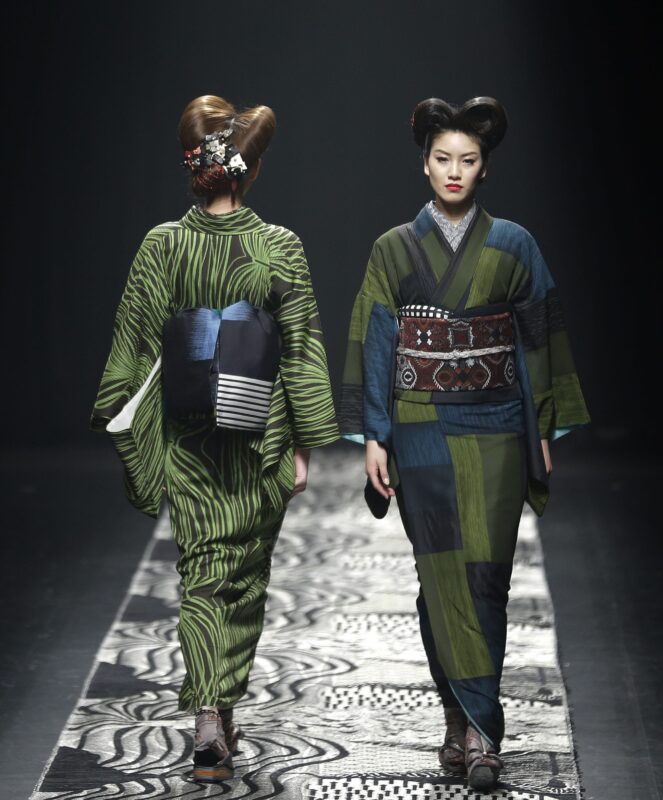
Japanese Archieve
Enlarge
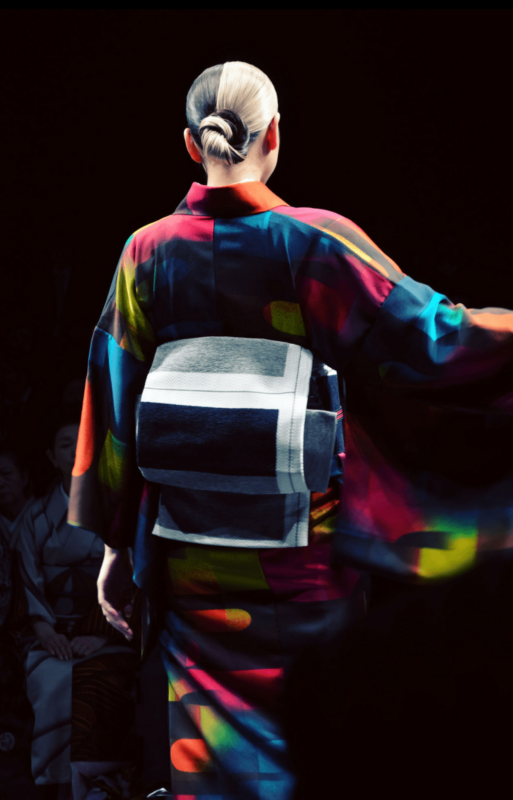
Japanese Archieve
Since his debut, Jotaro Saito has pursued “kimono as fashion matched with modern space”. Time after time, Saito has demonstrated his talent in fields ranging from the production of various products to the design of interiors, proposing “a lifestyle with which to enjoy Japaneseness”. He is a regular member of the Council for Fashion Designers, Tokyo.
Here is a resume of his amazing carreer.
1990 Launched “OTIAS,” a ladies’ prêt-à-porter brand.
1996 Participated in the Tokyo Collection as “OTIAS”; made his debut as a kimono designer.
1997 Held the first exhibition “JOTARO SAITO: SOLO EXHIBITION.”
1998 Held the second exhibition “JOTARO SAITO: KIMONO EXHIBITION.”
1999 Held the third exhibition “JOTARO SAITO: EVOLUTION OF KIMONO.”
2000 Held the fourth exhibition “JOTARO SAITO: COLOR MOOD.”
2001 Held the fifth exhibition “JOTARO SAITO: PRINCIPLES OF ATTRACTION.”
2002 Released the collection “NEWNESS IN TRADITION” in the Tokyo Collection.
2003 Released the collection “KIMONO DYNAMISM” in the Tokyo Collection.
2004 Released the collection “AKAI KIMONO” in the Tokyo Collection.
2005 Released the collection “RIKYU” in the Tokyo Collection; participated in the first “100% Design Tokyo” event; released Kyoto lacquer ware and products for interiors.
2006 Oct. Participated in the second “100% Design Tokyo”; released products such as lighting fixtures and shoes.
2007 Jan. Released furniture products in collaboration with Eiri Iwakura, an interior designer.
2007 Mar. Released the collection “HYAKU NEZUMI” as part of the Tokyo Collection.
2008 Mar. Released the collection “GOTHIC CAMELLIA” as part of the Tokyo Collection.
2008 Oct. Released the original au mobile phone case, and the strap in collaboration with BONNIE PINK.
2008 Oct. Released the ceramics line “Japanesque II” in collaboration with Wedgwood
2009 Mar. Released the collection “The Marbling” as part of the Tokyo Collection.
2009 Nov. Opened the first concept shop along the Keyakizaka-dori street in Roppongi Hills.
2009 Nov. Released a new collection of the furniture series “Len-yu”, which is the brand in collaboration with KARIMOKU Inc.
2010 Mar. Released the collection "Seifu Meigetsu x Suigetsu Kyouka" in the Tokyo Collection.
2010 Apr. Work on stage costume for the period drama “NEMURI KYOUSHIROU BURAI HIKAE” starring GACKT (nationwide performance starts in Tokyo in May and will play in 7 cities total)
2010 Jun. Work on stage costume for Mr. Taichi Saotome (nationwide performance starts in Tokyo in June)
2010 Sep. Redesign and opening of Hakuho-kan banquet hall at Happo-en Japanese garden through collaboration of three designers including Jotaro Saito.
2011 Apr. Released the furniture products “KAEN” and “NAGARE” in collaboration with KARIMOKU Inc. at the international trade fair “Milano Salone”.
2011 Apr. Work on stage costume for the drama starring Mr. Taichi Saotome. (at Meijiza Theater from April 7 to April 28)
2011 May PS Communications Inc. released “Hot Telegram: Embroidery Shikunshimon” produced by JOTARO SAITO
2011 Jun. Released the collection “+STRIPE” in the Tokyo Collection.
2012 Mar. Released the collection “FUTURISM” in the Tokyo Collection.
2012 Oct. PS Communications Inc. released “Hot Telegram: Monochrome peony” produced by JOTARO SAITO.
2013 Mar. Released the collection “DRESS people Immutable Fashion” in the Tokyo Collection.
2013 Jul. Released the original designed yukata (summer cotton kimono) and tenugui (thin hand towel) for “Kankoboko Float” at the Kyoto Gion Festival.
2013 Oct. Released the collection “THE HERITAGE” in the KIMONO SALONE Tokyo Kimono Collection.
2014 Mar. Released the Tokyo collection “POWER OF FLOWER”.
2014 Oct. Released the Tokyo collection “KIMONO STYLE 2SOULS COLLECTION”.
2015 Mar. Released the Tokyo collection “DARK FAIRYTALE”.
Jotaro Saito has been showcasing his kimono brand at Mercedes-Benz Fashion Week Tokyo since 2006.
Enlarge
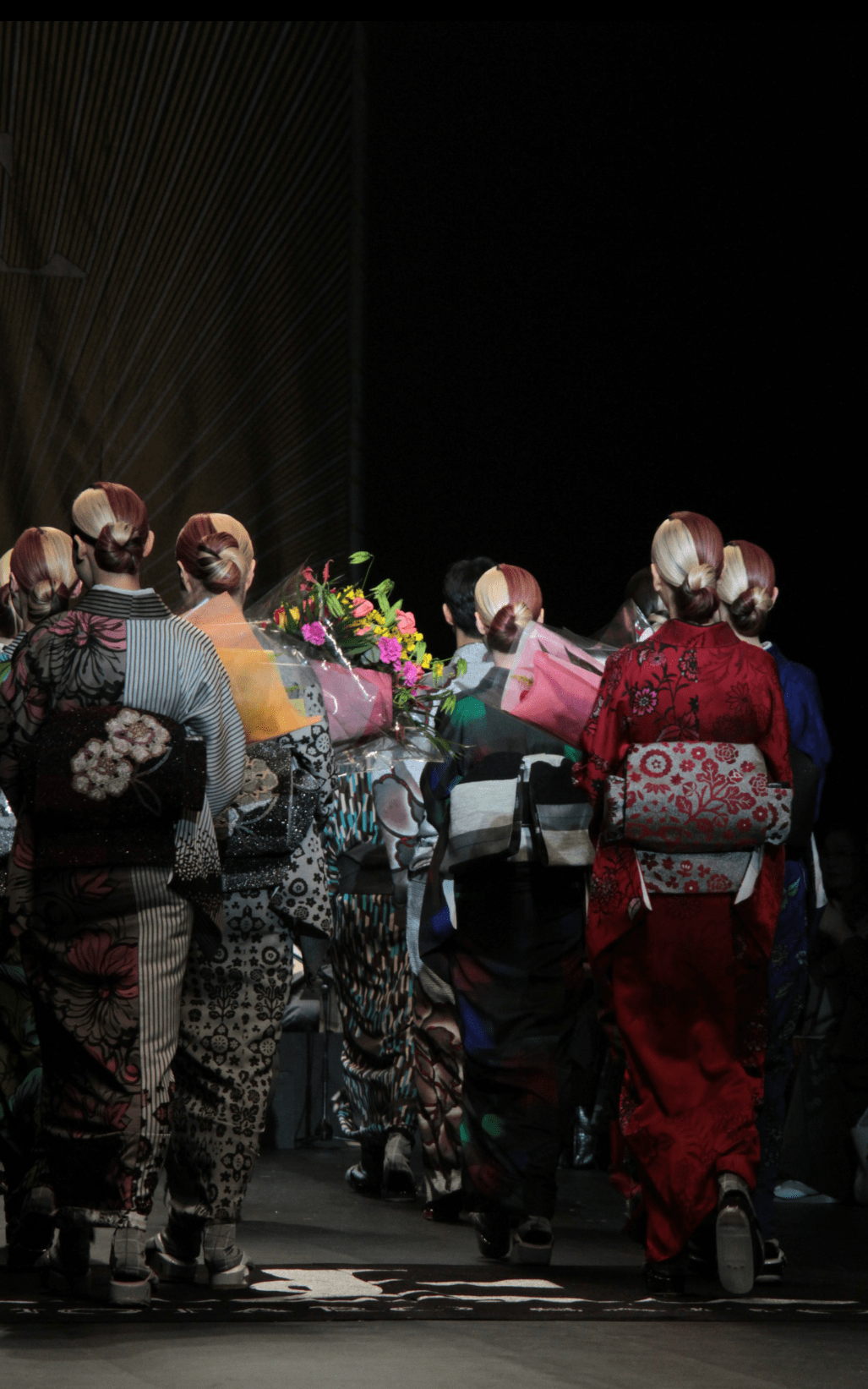
Japanese Archieve
“It’s in my blood,” Saito says. “I represent the third generation of kimono makers in my family, and we have always worked more like designers than shokunin craftspeople. In the kimono world, our family was always viewed as innovators for presenting kimono as fashion, and I think that is why when I was learning my craft in my 20s, the people around me and sales staff who sold my work encouraged me to make my debut as a kimono maker early. Usually you would have to wait until your 40s or 50s to make your official debut having inherited your family’s techniques, but I did so at 27. That is a rarity — even now.”
Enlarge
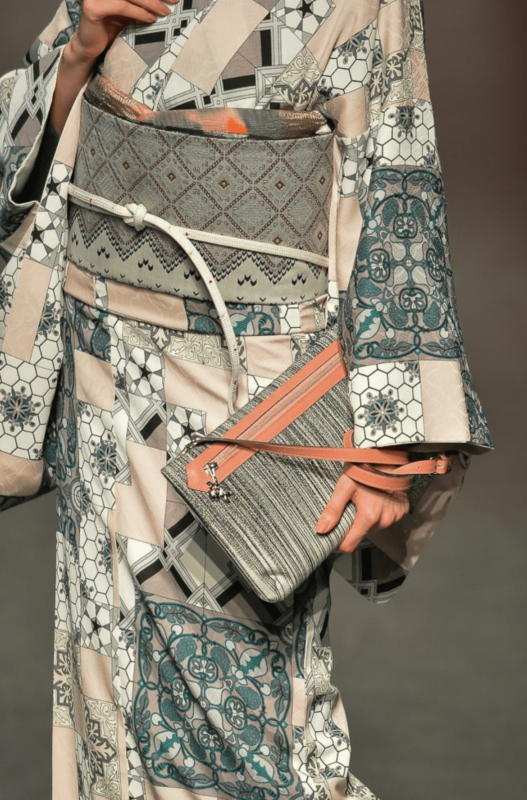
Credit: Jotaro Saito courtesy
The evolution of his art has produced a renovated garment that brings an image of sophisticated elegance. Young Japanese are used to wearing Saito’s kimonos to the most glamorous events, even though they are not strictly traditional.
“I used to start with a classical base, but as a youth I found the realism of the style dull, so instead of, say, drawing sakura (cherry blossom) pink, I would highlight them in blue; take the form and give it an interesting twist,” Saito says. “That is why I call myself a designer, not a craftsman who just repeats the same technique over and over.”
Enlarge
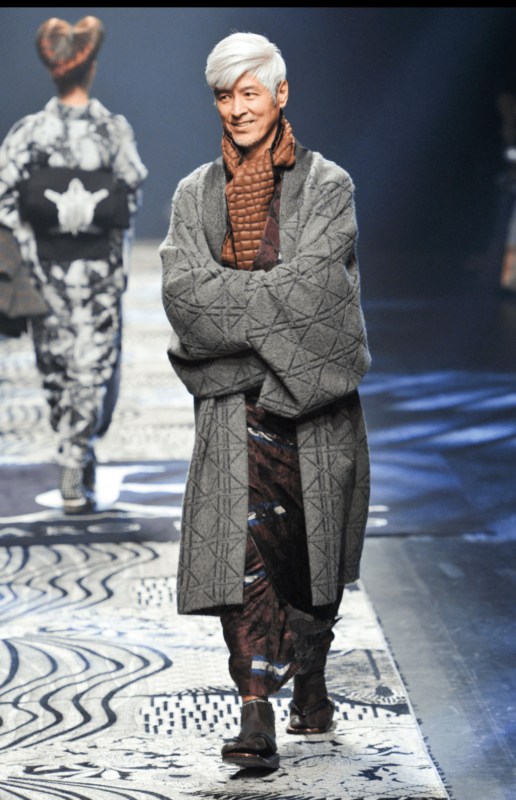
Credit: Jotaro Saito courtesy
Throughout his career, Saito has been conscious of his place in history and the responsibility he has to his country’s fashion culture.
“You have to remember that the history of wearing Western clothes in Japan is far shorter than our lengthy history with kimono,” he says. “We were just overwhelmed by the idea that everything that came from America was powerful and fast, and that everything from Europe was beautiful and detailed. Now that Western fashion is increasingly casual — with its focus on streetwear and its lack of a clear identity due to globalization in conjunction with Japanese people increasingly going abroad to see the West rather than believing in the dream — I think Japanese people have finally realized the beauty of their own country’s fashion culture. We neglected our tradition, but the fact that we are now able to enjoy and feel pride in our traditional culture is proof that the Japanese have matured in their stance toward it. However, the current popularity of traditional culture leaves us at a crossroad: Is it popular as an exhibit in a museum, or will it morph into something new?”
Enlarge
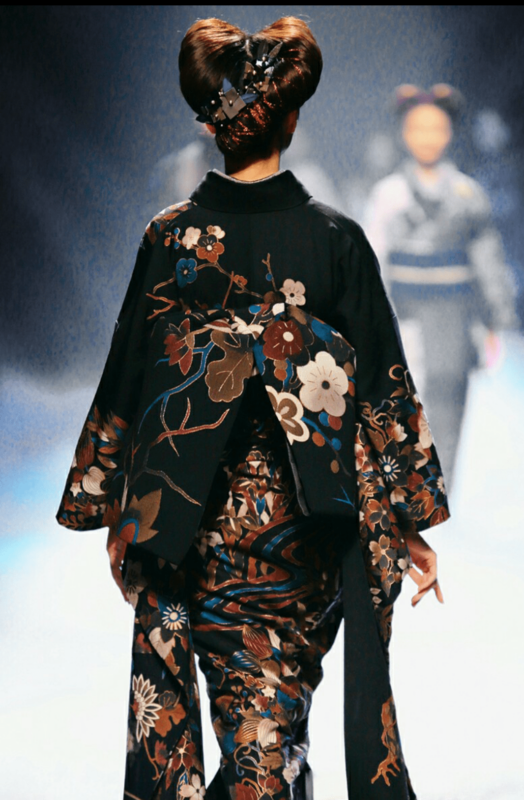
Credit: Jotaro Saito courtesy
“We have to move away from how we wear kimono,” he says. “People these days go to beauty salons to be dressed professionally and have their hair and makeup done, but in the process they all end up looking the same. People can’t be expected to lose their individuality, time and money — never mind concede to arbitrary restrictions based on age, status and so on — just to wear kimono. The key for the industry is to make kimono without rules, then I can just focus on making the best designs that can compete with a Dolce & Gabbana dress or Armani suit on equal footing.”
